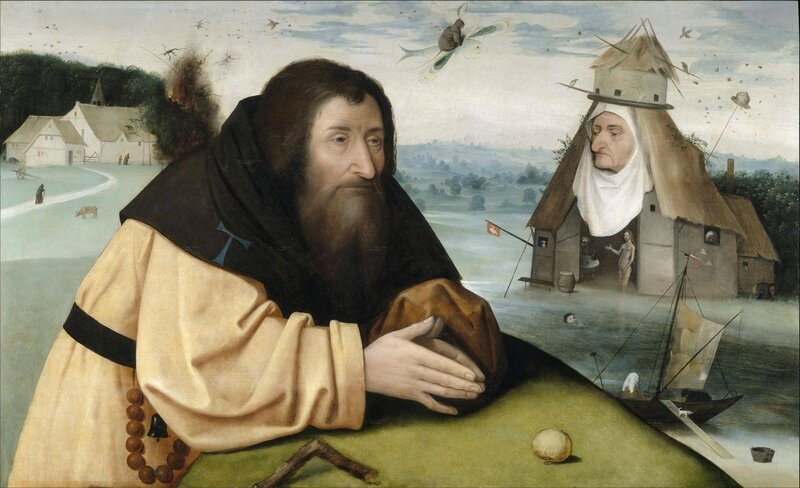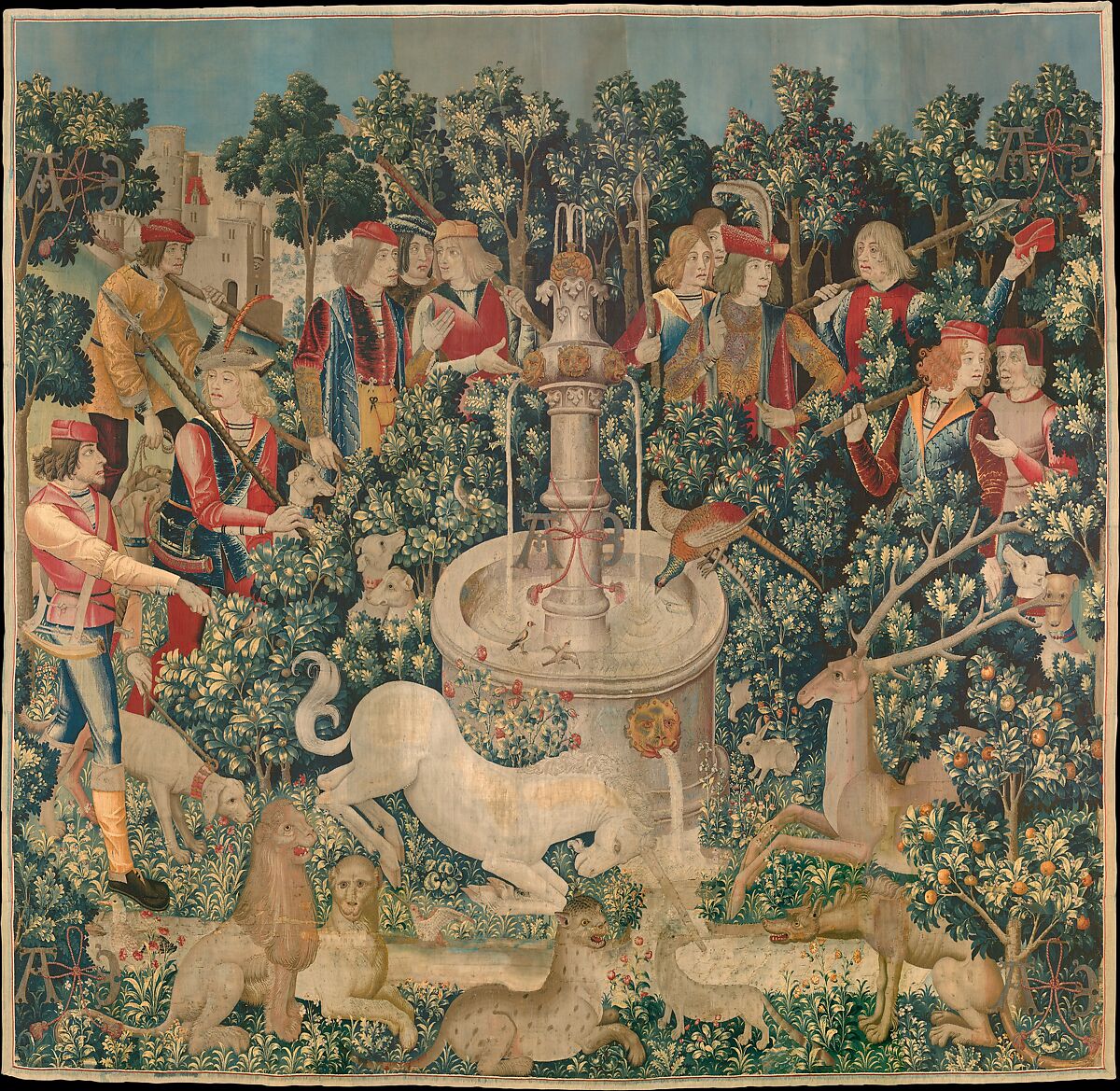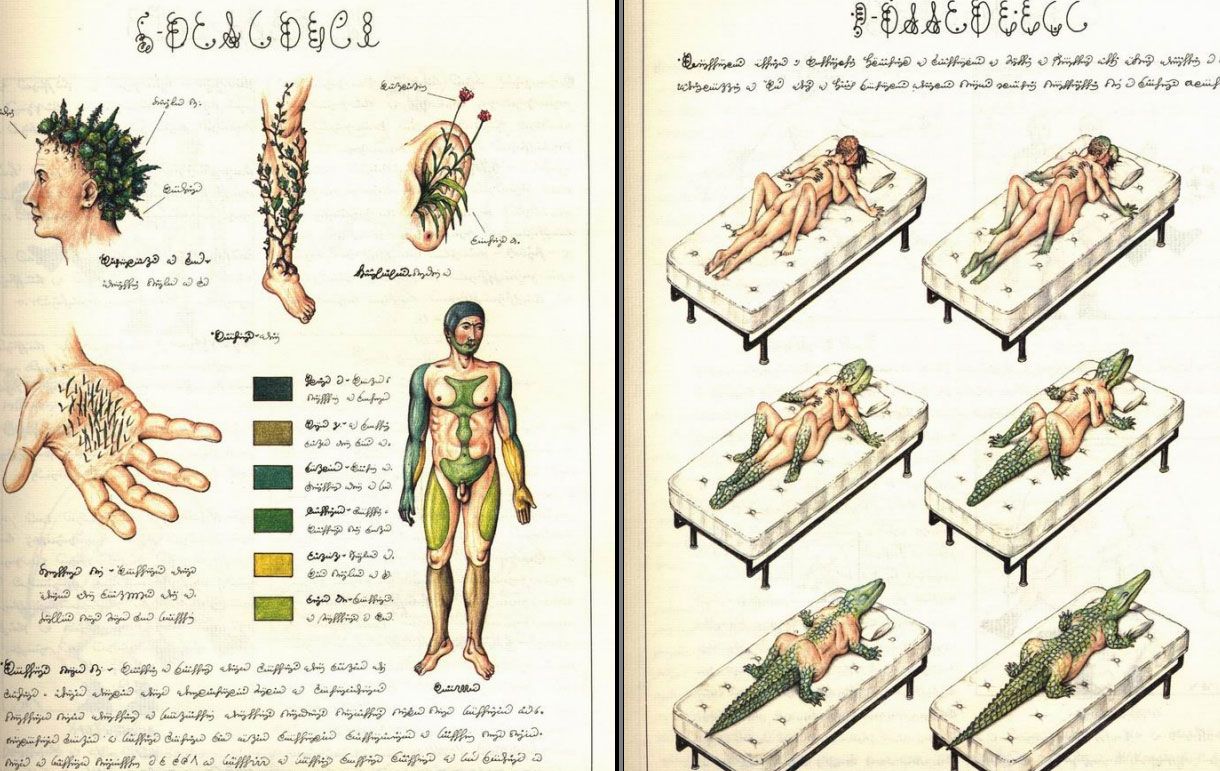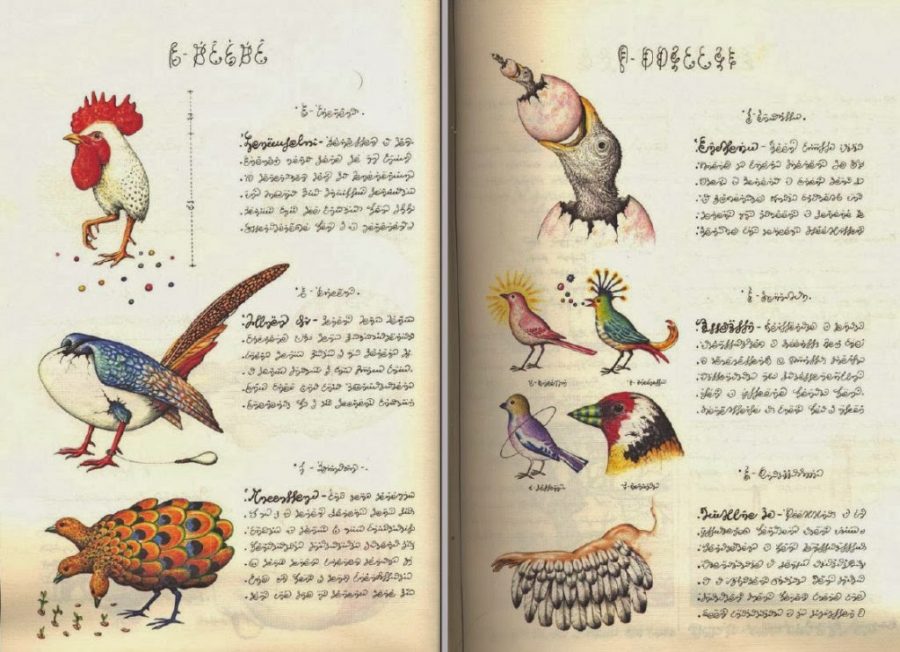I'm honestly not sure how to feel about the fact no matter how hard I try, no matter how much DMT I could ever smoke or acid I could ever drop, a 15th-century painter will always have me beat for the most surreal artistic subject matter imaginable. Are we sure they didn't grow psilocybin mushrooms in 1400s Europe??
One of my favorite periods in art history is the Early Netherlandish period, which flourished during the 15th and 16th centuries in present-day Belgium. It is defined by certain artistic conventions such as illusionism and rich detail. Aside from painting, the period is also known for its illuminated manuscripts and gorgeous tapestries. I've always been aware of this art style, but I really went down a rabbit hole learning about it recently and I thought it might be fun to document it... So here we go!
Hieronymous Bosch
The first artist I came across from this period, and undoubtedly one of the most recognizable, is Hieronymous Bosch. I first saw his famous "Garden of Earthly Delights" triptych in a college art appreciation course and I was immediately transfixed. It's like a really fucked-up Seussian acid trip. See for yourself:
 |
| Click here to see a high-quality, zoom-in-able version of this painting. Trust me, it's worth it to see all the details. |
This triptych was unlike anything I had ever seen before, and I was immediately drawn into its world. The obscure symbolism, the portrayals of otherworldly hedonism, the striking color palette: the whole thing is just so dense that I find myself discovering something new every time I look at it. The "dark fantasy" style that's present in so much of Bosch's work has remained compelling to me ever since.
 | |
| Part of the central panel of Bosch's "The Last Judgment" triptych (1486). Image source |
Like most Early Netherlandish painters, Bosch primarily worked in oil paint on wood canvases. Not much is known about his personal life or what inspired the figures and landscapes in his paintings. Beyond the general themes of religion and the afterlife, art historians are left to speculate about the origins of his very singular style.
 |
| Hieronymous Bosch, The Temptations of Saint Anthony (~1510). Image source |
Illuminated Manuscripts
Probably one of my favorite art media ever is the illuminated manuscript. If you're not familiar with them, here's a description:
"Illuminated manuscripts are hand-written books with painted decoration that generally includes precious metals such as gold or silver. The pages were made from animal skin, commonly calf, sheep, or goat. Illuminated manuscripts were produced between 1100 and 1600, with monasteries as their earliest creators. Wealthy patrons also wanted these illustrative works for personal libraries and encouraged the formation of private workshops that flourished in French and Italian cities between the 13th and 15th centuries. The decline of the illuminated manuscript tradition coincided with the ability to mass produce printed text and the increasing numbers of literate people who wanted secular as well as religious books. (National Gallery of Art, 2024)
Illuminated manuscripts were popular across the globe (notably, the Islamic Golden Age produced a lot of really beautiful ones), but I find the Early Netherlandish ones to be particularly captivating. Take a look:
 |
| The two spreads above are taken from a Book of Hours from 1524. The full text can be accessed here. |
| The above two pages are taken from Anne of Brittany's Book of Hours (circa 1500-ish). The full text can be accessed here. |
These two examples are both Books of Hours, a popular type of illuminated manuscript that would serve as the personal prayer book of a wealthy court member. They were decorated with beautiful illustrations of nature and Biblical scenes. What I love most about this style of manuscript is the dimensionality the artist is able to create on such a flat surface. The frames and figures seem to jump off the page due to the shading and vibrant colors. I believe this is an attempt to emulate altarpieces -- I just can't get over how impressive it is that one person managed to illustrate hundreds of pages with that caliber of artistic consistency throughout.
Tapestries

The Unicorn Purifies Water (from the Unicorn Tapestries, ~1500). Image source
One of the things I love most about the Early Netherlandish period is how much the artists would draw inspiration from the natural world. Not only are the scenes lush with flora and fauna (in total, the six surviving tapestries from the famous "Unicorn series" feature 101 different plant species), but the dyes used to create the striking colors were also carefully harvested from dye plants that grew in the area:
By using a combination of weld, rose madder, and woad, artisans were able to create a wide variety of colors which have remained surprisingly vibrant.
Influences on outsider art
One of my favorite pieces of outsider art is the Voynich manuscript, a mysterious manuscript dating back to the 1400s (around the same time as the Early Netherlandish period). The ~240-page manuscript is written in an unknown language that has never been decoded(!) despite over a century of cryptographers' attempts to crack it. It remains unknown whether the manuscript is the work of an outsider artist, the product of a mentally ill individual channeling glossolalic hallucinations, a very elaborate hoax, or something else entirely. I'm inclined to believe it's an instance of outsider art, but I really have no way of knowing. I'm just fascinated by it and I've had a copy of the Yale University Press facsimile (which I highly recommend) on my coffee table for years.
What's especially interesting to me about this manuscript is its commonalities with Bosch's work, specifically some of the weirder motifs. For example, look at this side-by-side:
 |
| Left: a detail from "The Garden of Earthly Delights" (circa 1490-ish). Right: a detail from a page in "The Voynich Manuscript" (circa 1400-1438). |
Both pieces depict nude humans inside of what appears to be the fruiting body of a gigantic plant, which is not a common motif. Astute readers might notice that the Voynich manuscript actually pre-dates Earthly Delights by a few decades. It's impossible to say with any certainty whether Bosch could have laid eyes on the Voynich manuscript, but I really doubt he did. So was it some strange parallel creative process that led both artists to have the same idea? Probably so. It's one of those situations where it's like "If I had a nickel for every time an artist from the 1400s depicted naked humans inside of gigantic fruiting bodies, I would have two nickels - which isn't a lot, but it's weird that it happened twice." Or maybe people were doing some really freaky stuff back then, who knows.
One example of modern outsider art that emulates the Early Netherlandish style is the Codex Seraphinianus, which was originally published in 1981. Like the Voynich manuscript, its author Luigi Serafini wrote the text in a fake writing system which he invented to accompany his depictions of otherworldly organisms. A staggering 370 pages long, the Codex is full of wonderful examples of speculative evolution.
I just can't get enough of this weird little subgenre. There's something about the informational tone of the "field guide" medium that makes it feel like maybe these creatures do exist in some parallel dimension where they're being catalogued by an extradimensional Ernst Haeckel (who deserves a blog post of his own).
One last honorable mention here would be The Augsburg Book of Miracles, yet another mysterious illuminated manuscript. The author and exact age of the manuscript is unknown, but it was most likely produced between 1545 and 1552. Like the other two manuscripts I've mentioned thus far, this one features otherworldly depictions of fictional creatures. Unlike the others, it also contains scenes from the Bible and loosely follows the chronology of the Old Testament and the Book of Revelation. Here are some noteworthy pages:
I really want to know what's up with that last one. Who is this bird-donkey-human creature and why is she stacked??









No comments:
Post a Comment